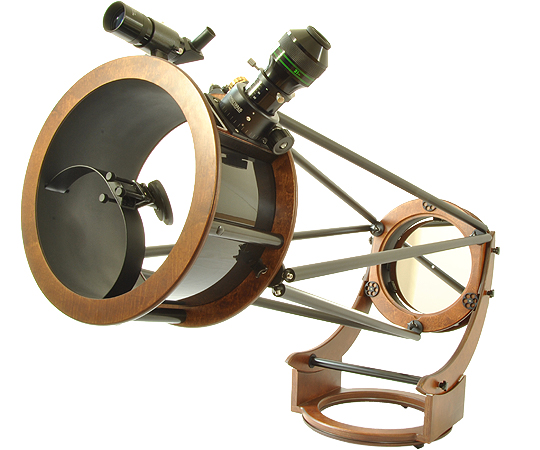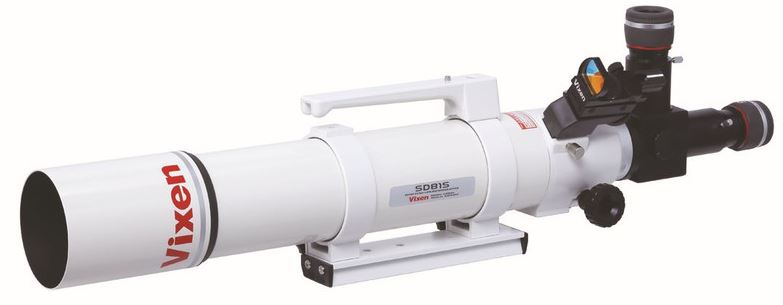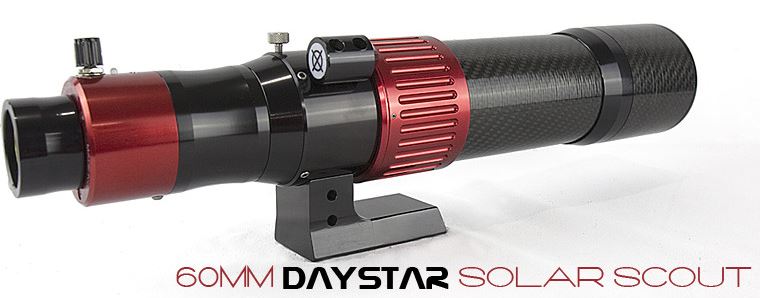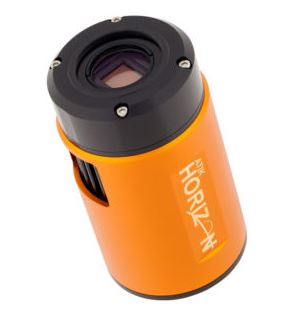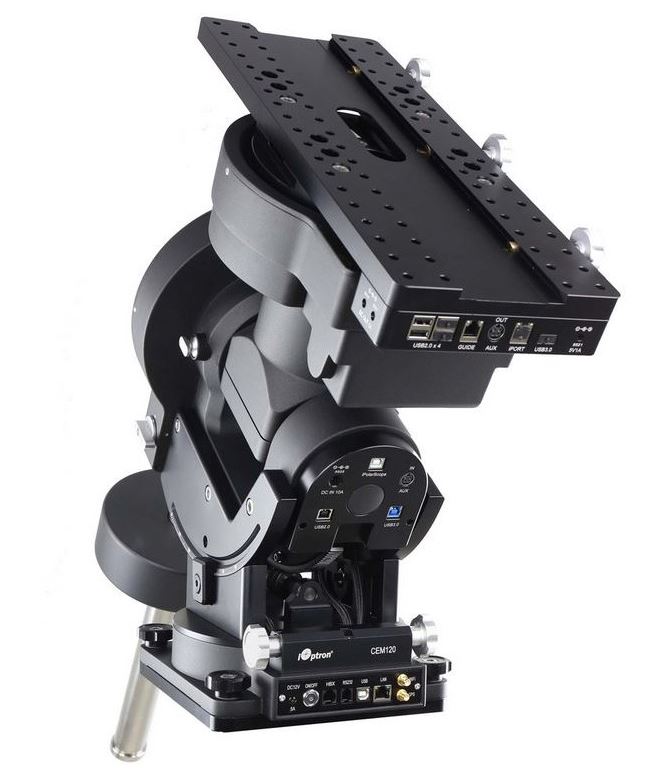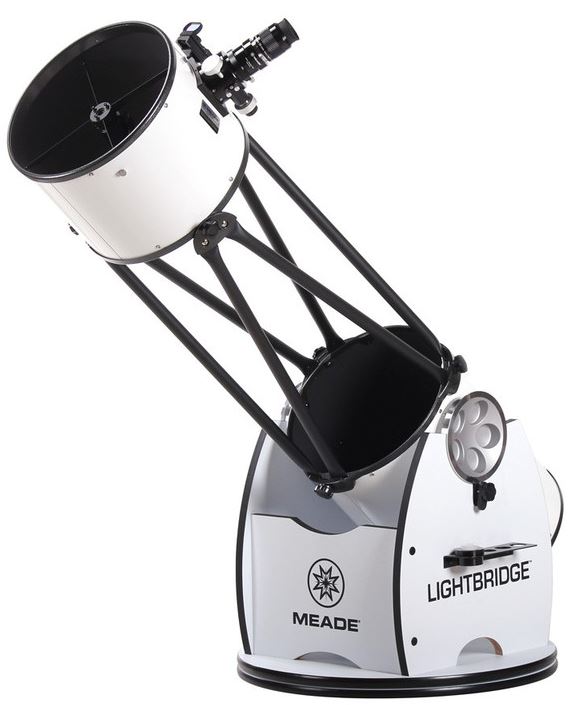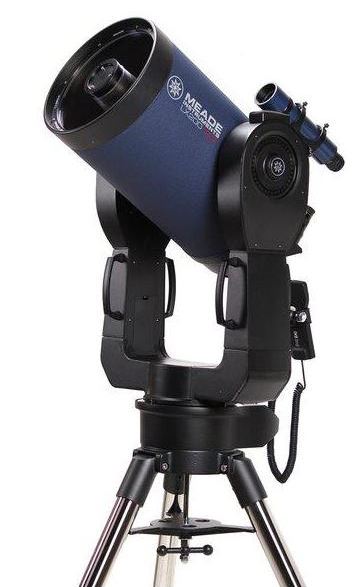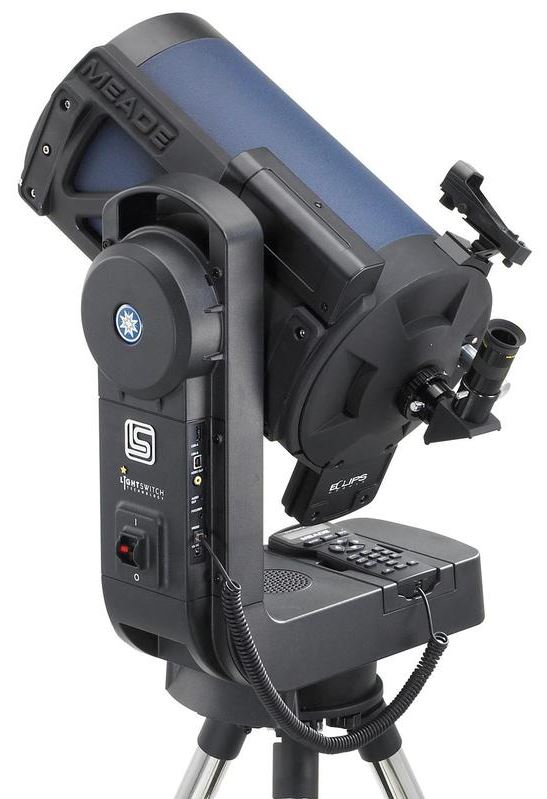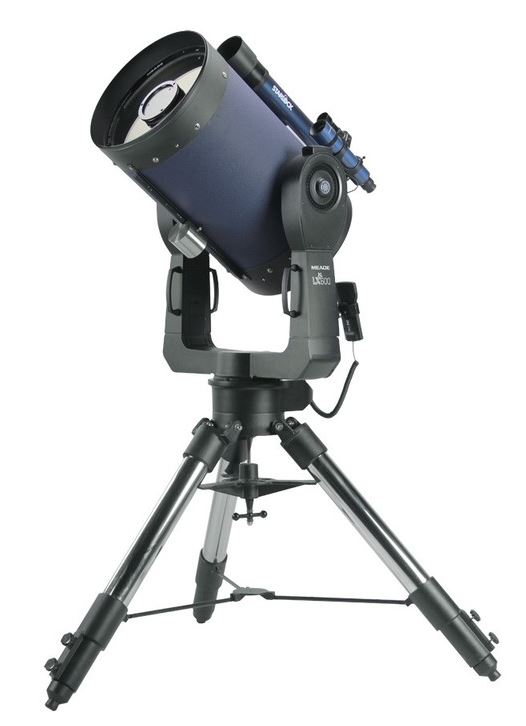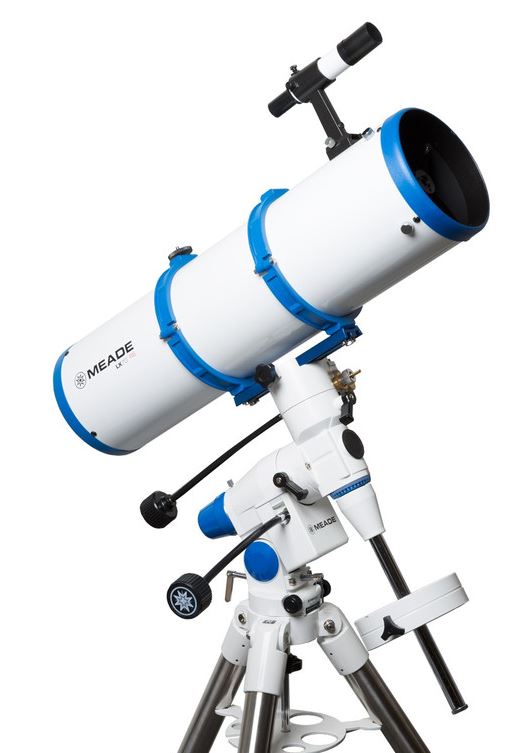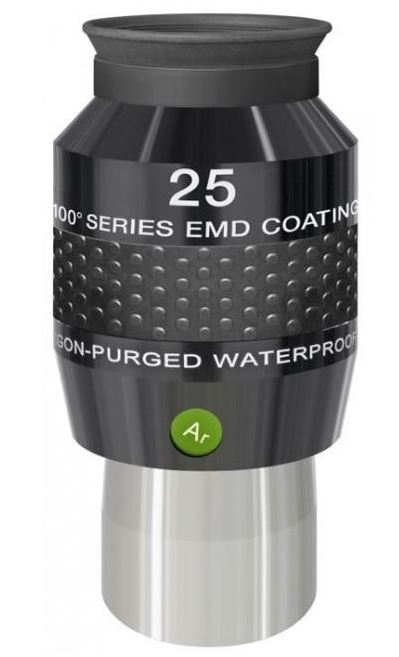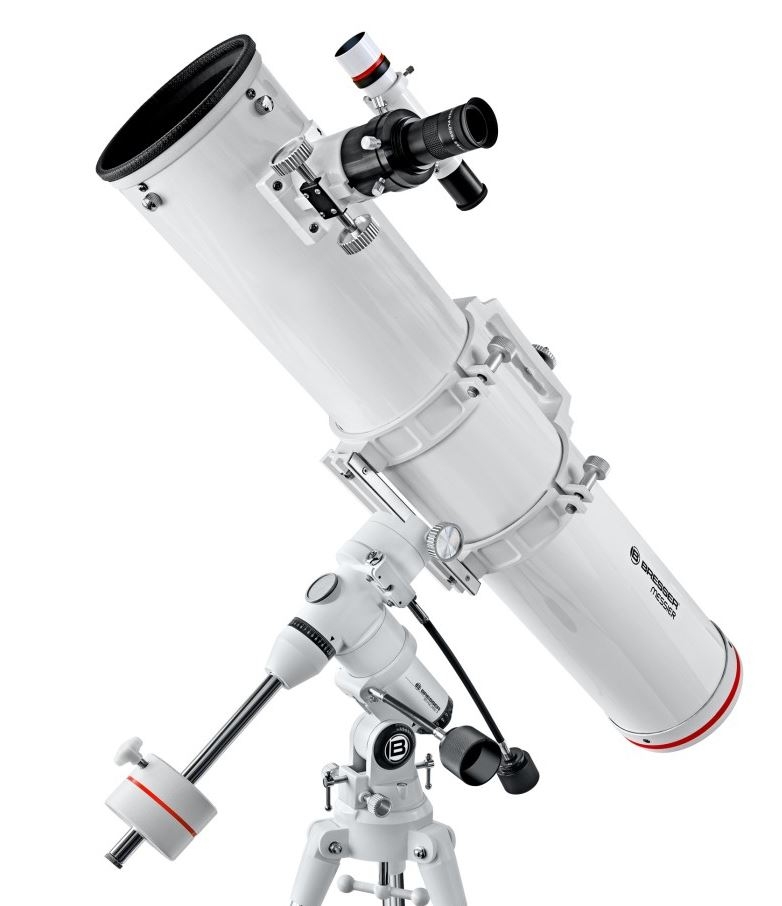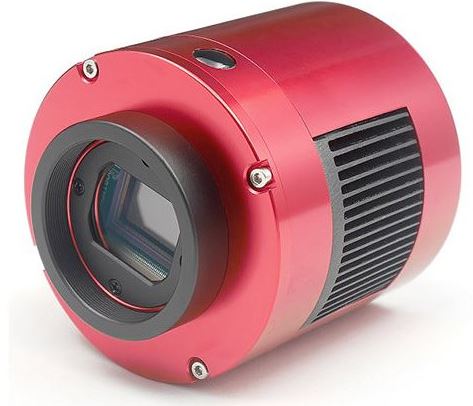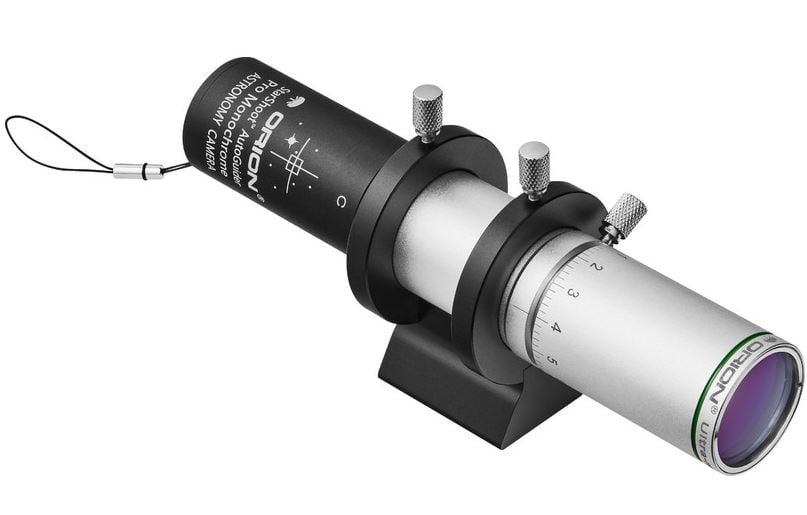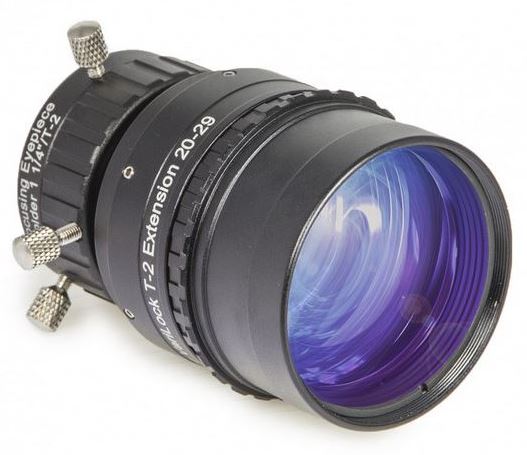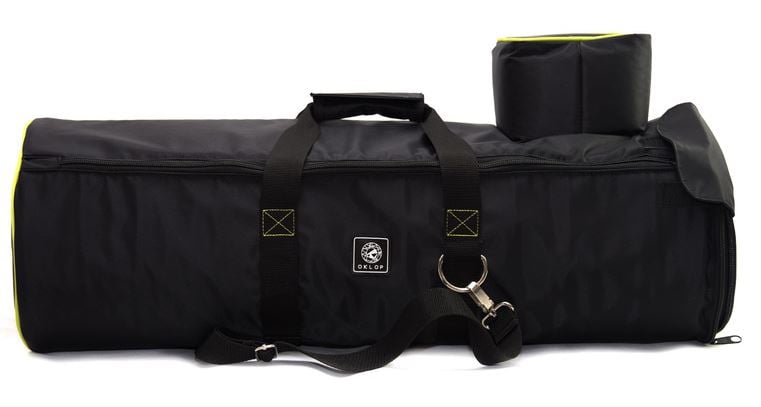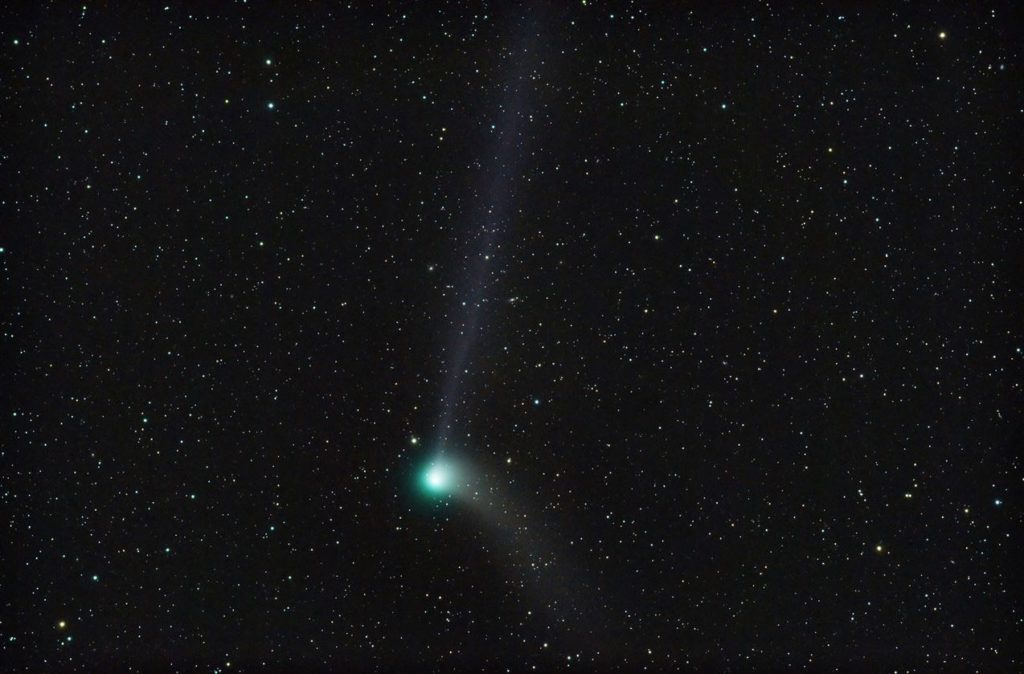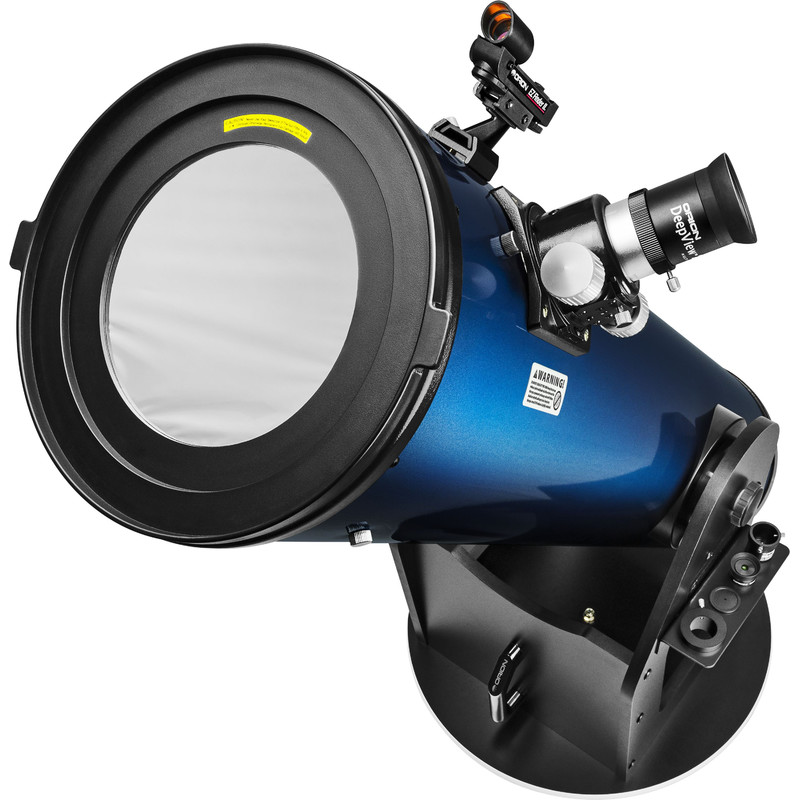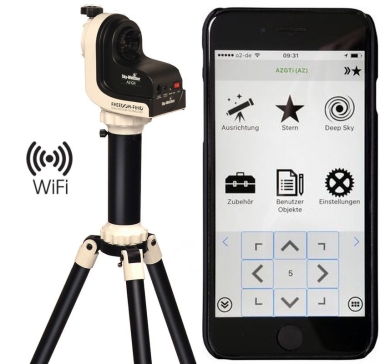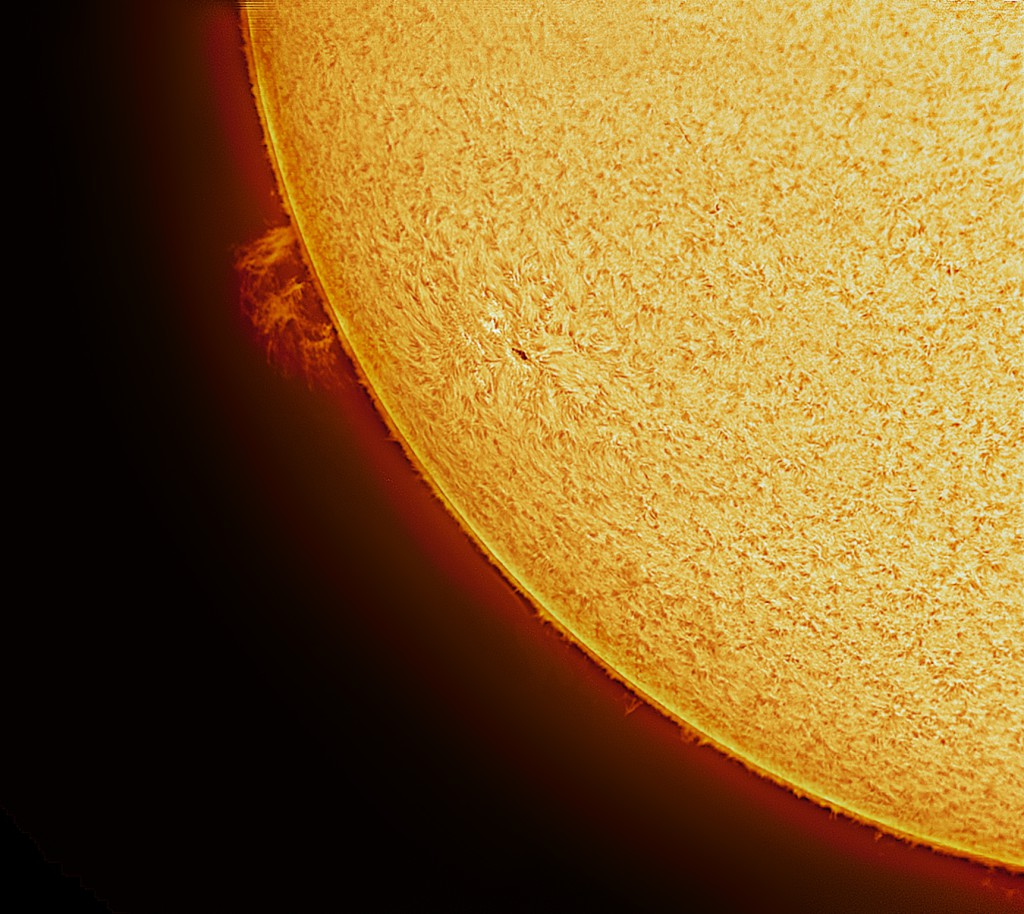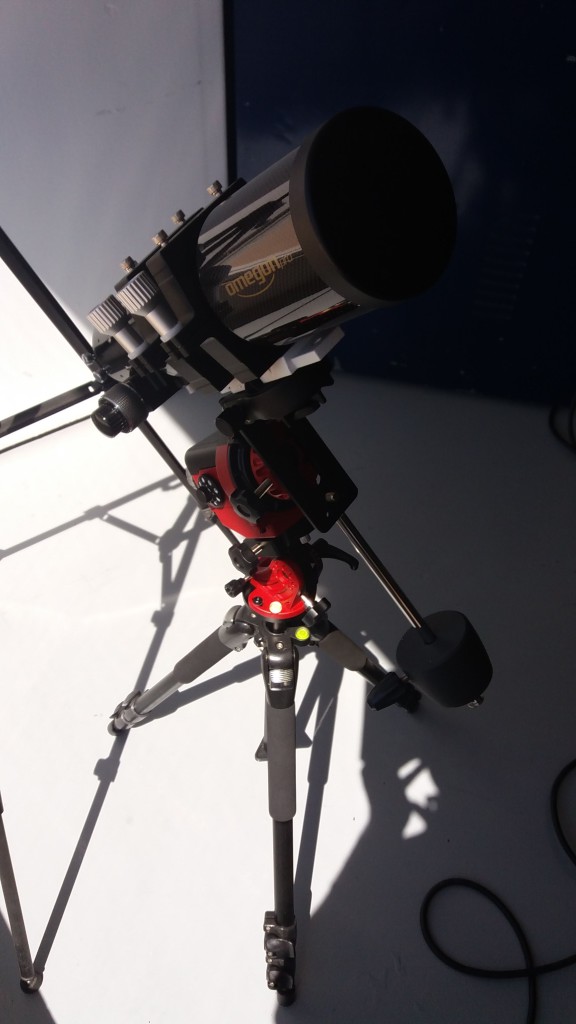This year, too, we would like to present a small selection of items to you every month that we have recently included in the range:
Telescopes by Taurus have recently been added to our shop. The Dobson T300 with a 12-inch aperture is the first model that we would like to present to you. Other models will follow in coming days. The Dobson T300 telescope has a wire-mesh tube, which means it’s easy to transport and can be set up without tools in just a few minutes. The entire system weighs just 15.9 kg, and the heaviest part weighs only 9.6 kg.
Unlike what you can see in the picture, the telescope does not come with a finder or an eyepiece. It does, however, come with a scattered light protector. It also comes with a high-quality 2” Crayford eyepiece holder with support.
The Dobson telescopes by Taurus are developed and made in Poland. We are pleased to be able to offer these telescopes to you now!
For those who prefer to take photographs, instead of exploring the night sky with their eyes alone, should make use of an apochromatic lens. The Japanese manufacture, Vixen, is offering three new models that have different lens diameters: SD81S, SD103S and SD115S.
The recently designed lens element with FPL-53 glass reduces chromatic aberrations to such an extent that they are barely detectable, ensuring an extremely clear and sharp picture! These three APOs are ideal for photography with DSLR cameras with full-format sensors.
The American company, DayStar, specialises in instruments for observing the sun. With the SolarScout 60, DayStar is adding another solar telescope to its SolarScout series. The telescope has an integrated QUARK H-Alpha filter.
When you buy this telescope, you are getting a finely tuned system that comprises optics, etalon filter and helical focusing with which you can enjoy observing and photographing the sun in H-Alpha light without risk!
Thanks to the light carbon tube, you can place SolarScout telescopes on a small mount. The integrated solar finder will help you to effortlessly and safely align the optics with the sun.
This is the first camera by Atik with a CMOS sensor – the future of sensor technology. In this case, it is a 16-megapixel Panasonic MN34230. The small pixel size of 3.8 µm means high resolution and makes the camera interesting for short focal length apochromatic lenses and photo lenses. The integrated cooling system brings the camera down to 40° C below the ambient temperature. With the quiet electronics and the USB 3.0 port, the Atik Horizon is ideal for shots of weak nebulae with long exposure times.
Like the Atik Infinity, the Atik Horizon is also ideal for live stacking. This significant trend ensures more fun doing astrophotography and publicity work at observatories.
You will, of course, receive both an Atik Horizon and a colour camera. This colour variant saves you from having to use colour filters.
We have had good experience with the mounts by iOptron in recent years. They are long-established in the USA, and are now becoming more popular across the pond. iOptron is now putting a mount on the market that features a load capacity of over 50 kg for observatories: The CEM120 GoTo mount.
The design is reminiscent of the tried and tested CEM60 GoTo that has a load-bearing capacity of half that. The polar wedge of both mounts is supported in the centre of gravity, thereby achieving a high level of stability with low weight.
For those who are planning a garden observatory or a new acquisition for a club observatory, the CEM120 GoTo should be seriously considered. Speak to us, and we’ll be happy to advise you!

